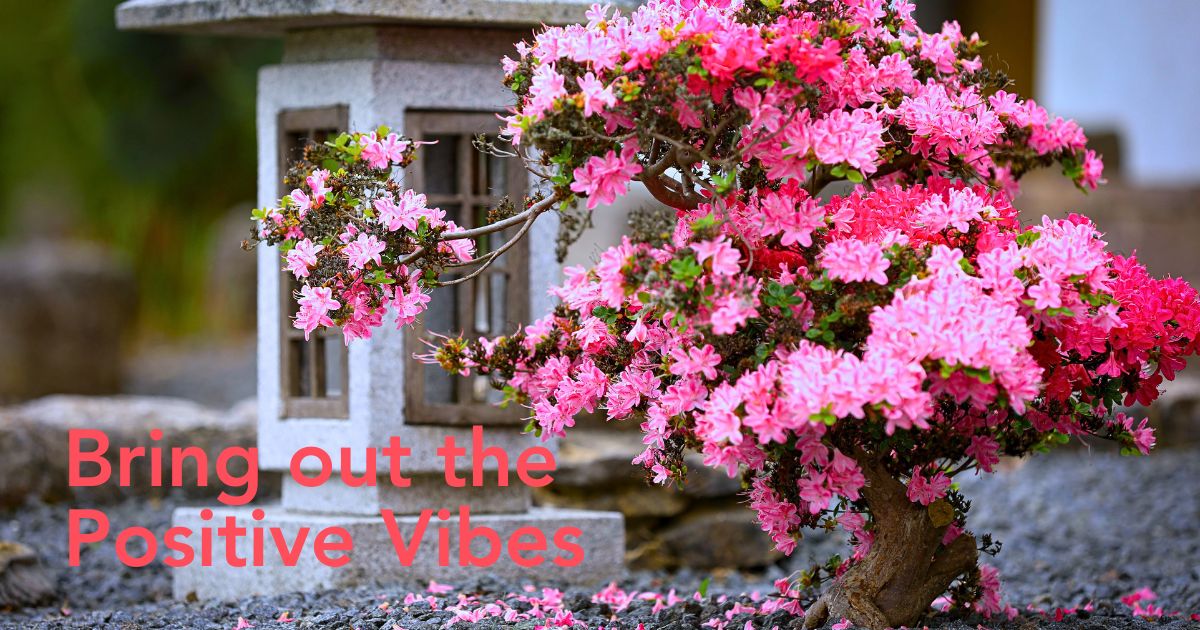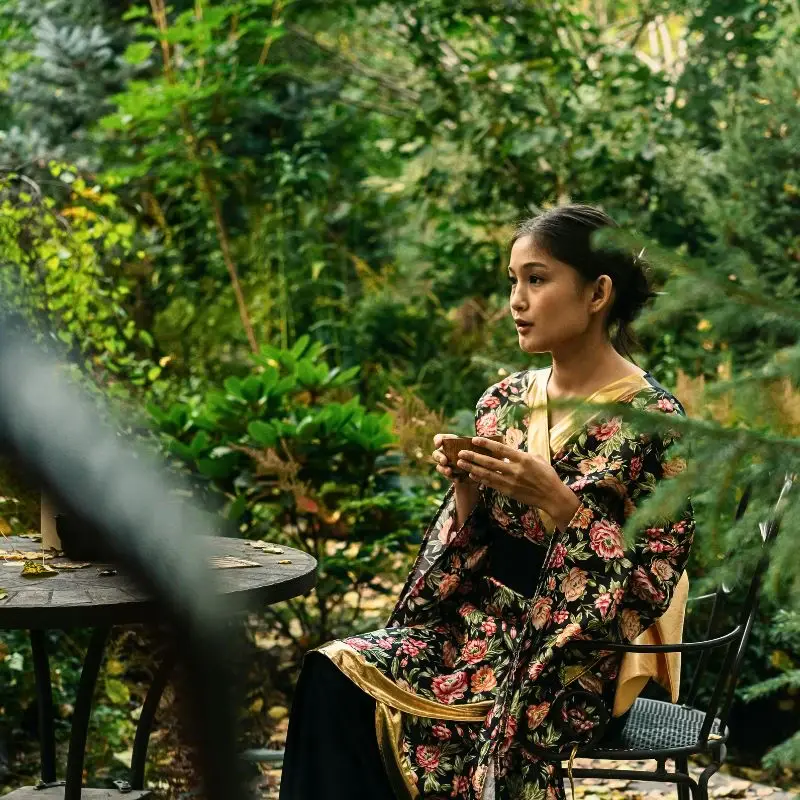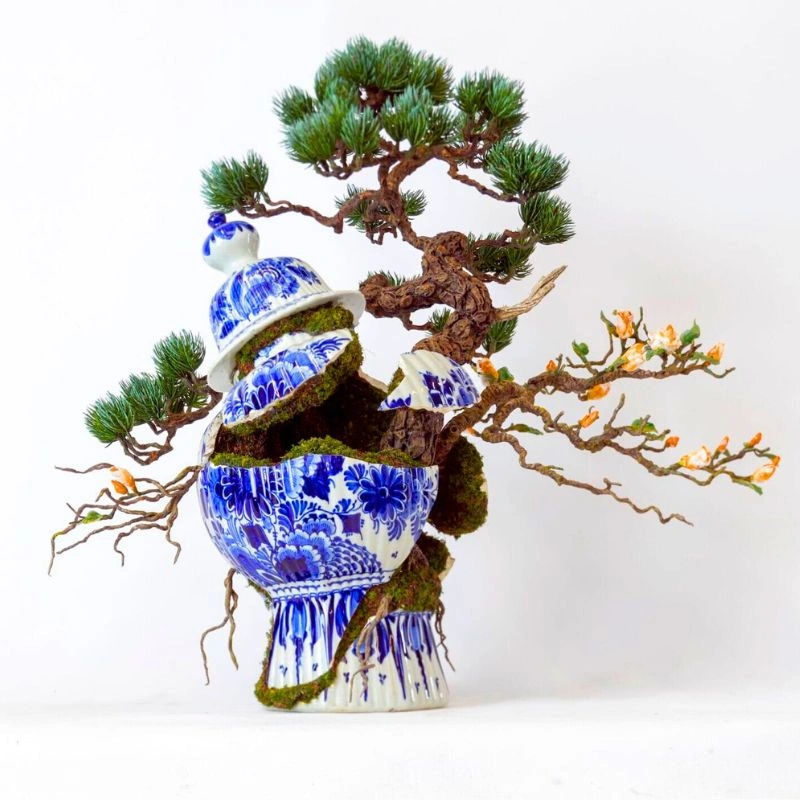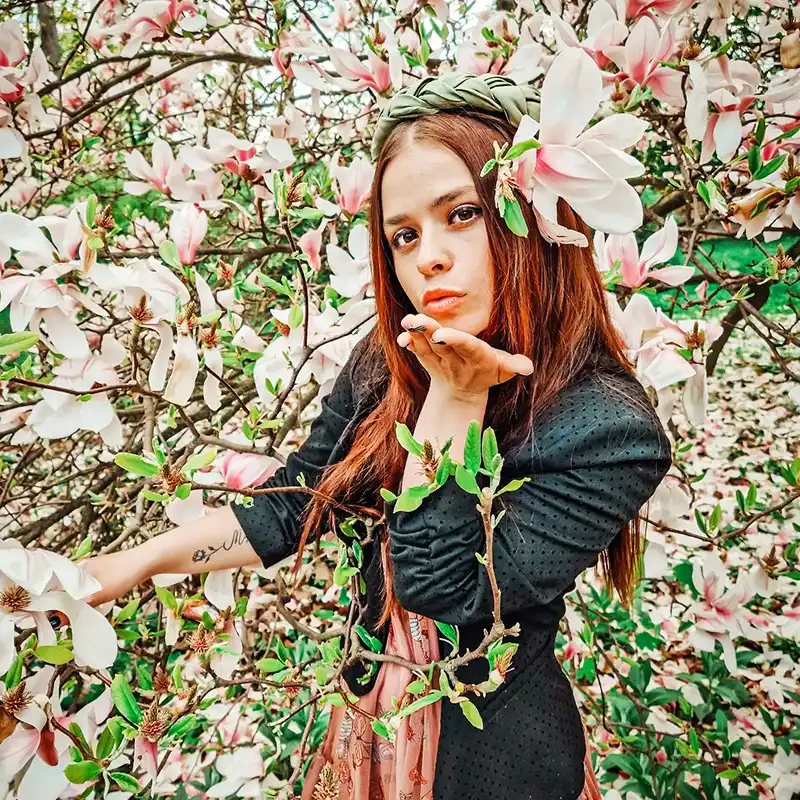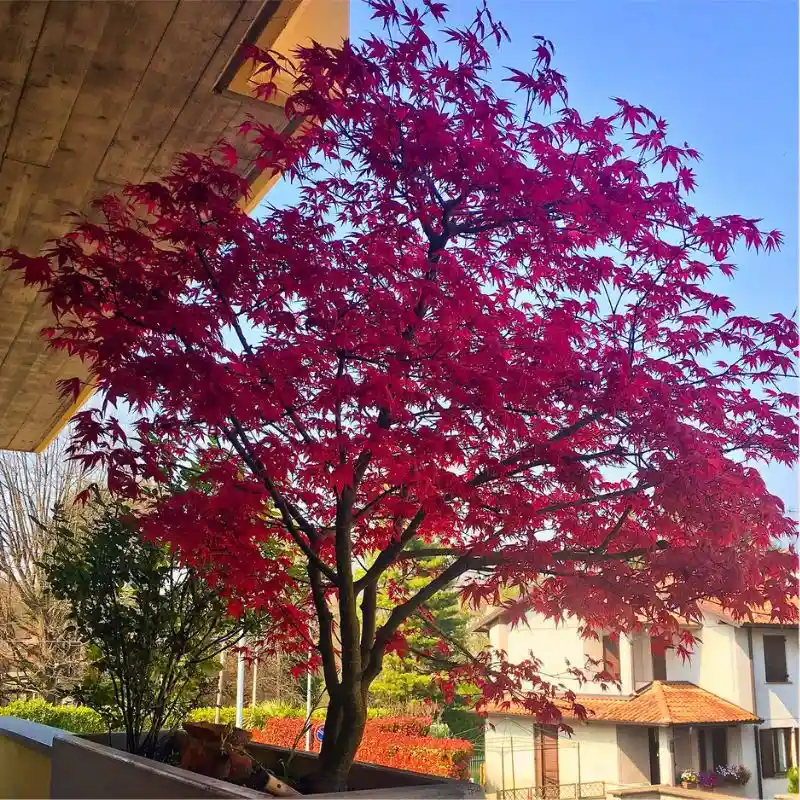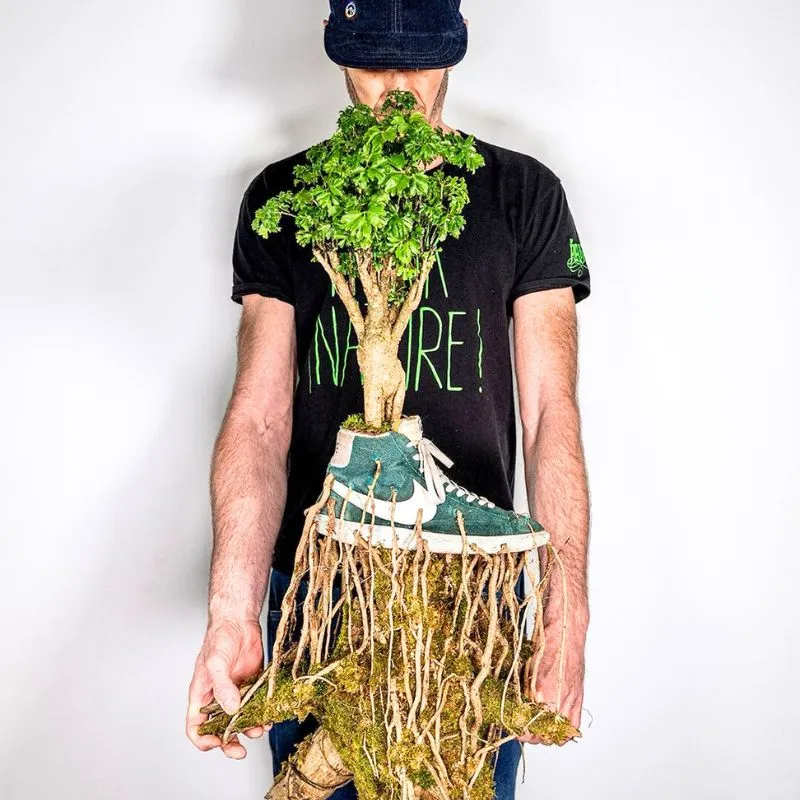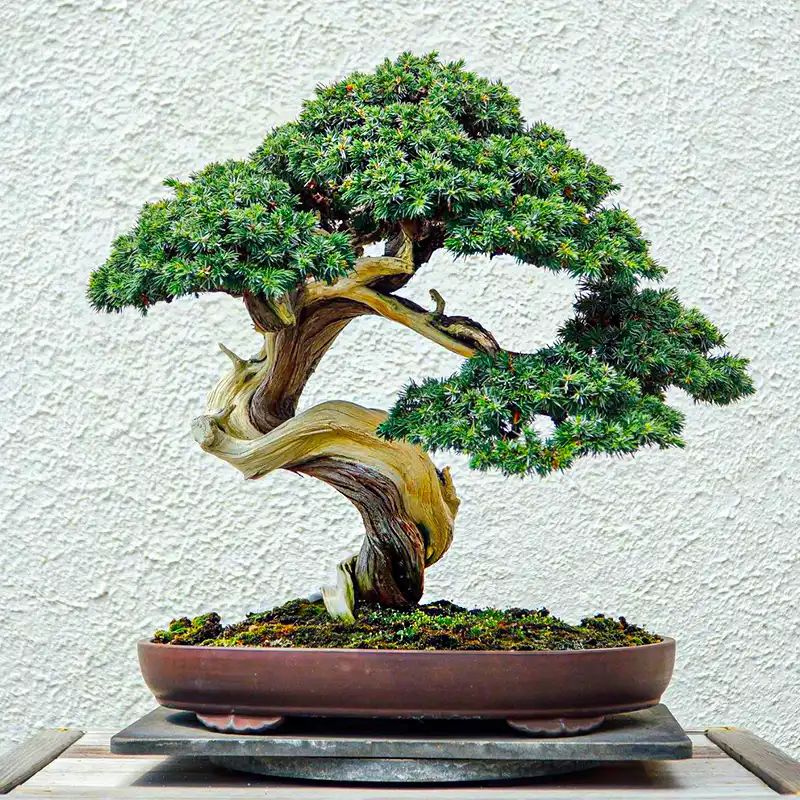Be it that they are grown indoors or outdoors, miniature bonsai trees are, without a doubt, one of the most attractive additions to any decor. They are a sight to behold, especially, given our human inclination towards nature.
These miniature bonsai trees are not just fun to look at but are also able to revivify a living room, an office space, the lounge, or a waiting room. They effortlessly bring out positive vibes, especially at a time when biophilic design trends are flourishing.
Miniature Bonsai Trees Have Numerous Benefits
Bonsai, the ancient art of training trees has been steadily growing ever since the inception of the trend at least a thousand years ago in China. despite the whole lot of work that it takes to establish and maintain them, people are still willing to invest in them.
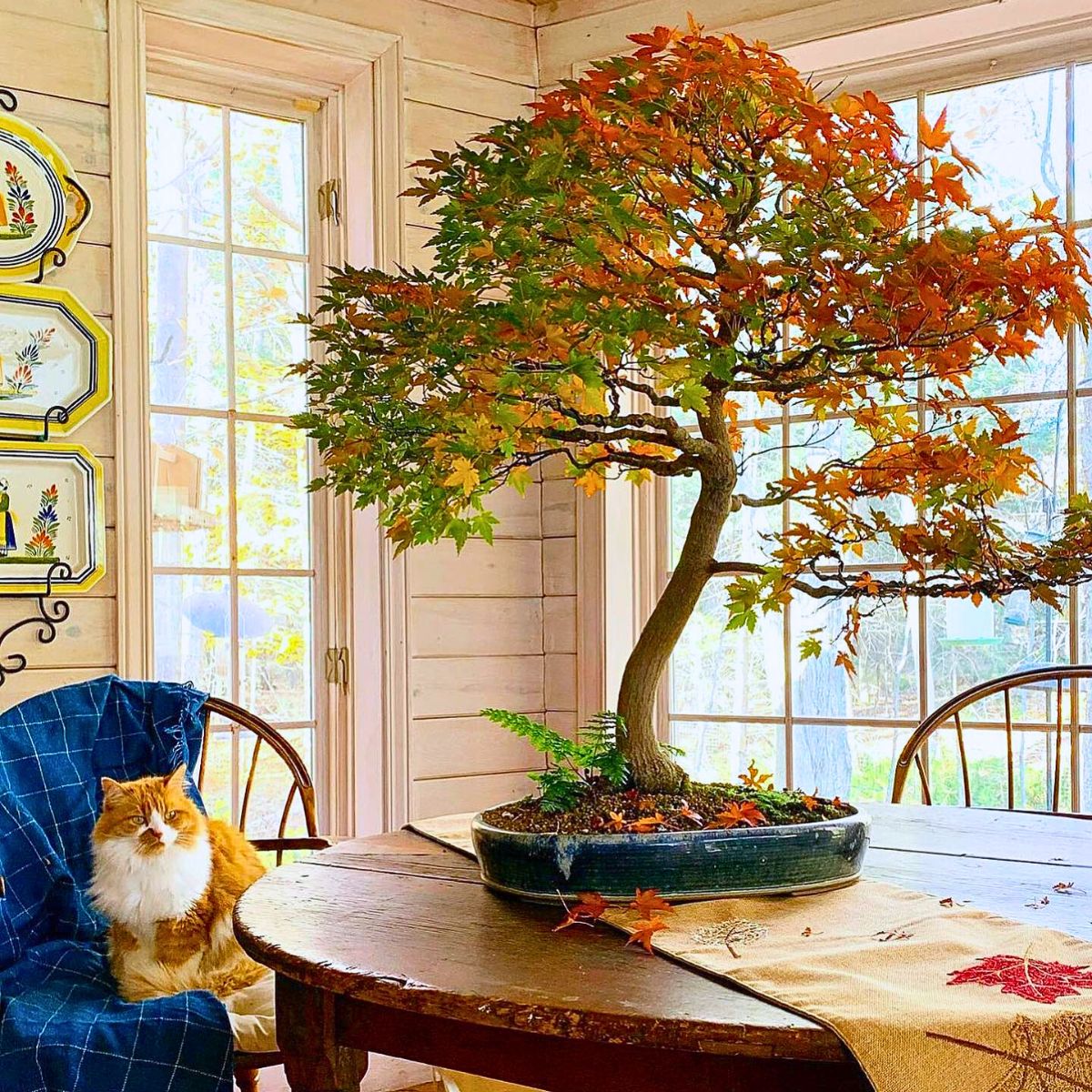
Photo by @davideasterbrookbonsai
These miniature trees can be planted alone or grown as part of the plant diversity that forms a biophilic design, in both outdoor and indoor spaces. And they come with a host of benefits, not just in beautifying the space in which they are grown, but also to the inhabitants and those who use these spaces for different purposes. These miniature trees are capable of purifying the oxygen in a room, lowering blood pressure, creating a relaxed aura and mind, reducing the vibes of psychological stress, and enhancing the well-being of people.
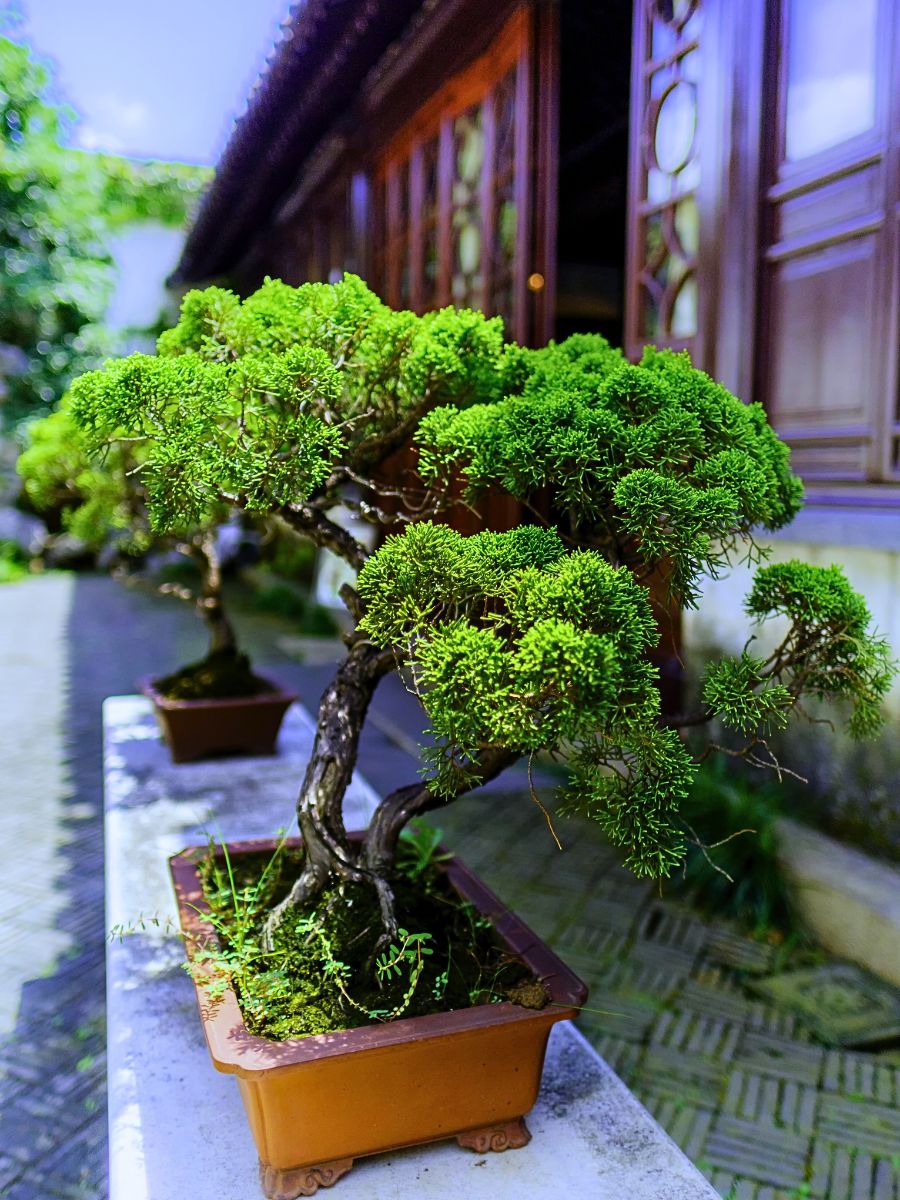
Miniature Bonsai Trees Can Enliven Your Interior Space
When it comes to livening up indoor living spaces, few elements can rival the visual appeal and artistic spirit of bonsai. These miniature trees have long been esteemed for their complex forms and the sense of tranquility that they bring. Aside from their meditative qualities, they can infuse indoor environments with color. This is especially so for bonsai cultivars with brilliant foliage, flowers, or fruits, which are ideal for creating mesmerizing focal points that not only draw the eye but enliven the room.
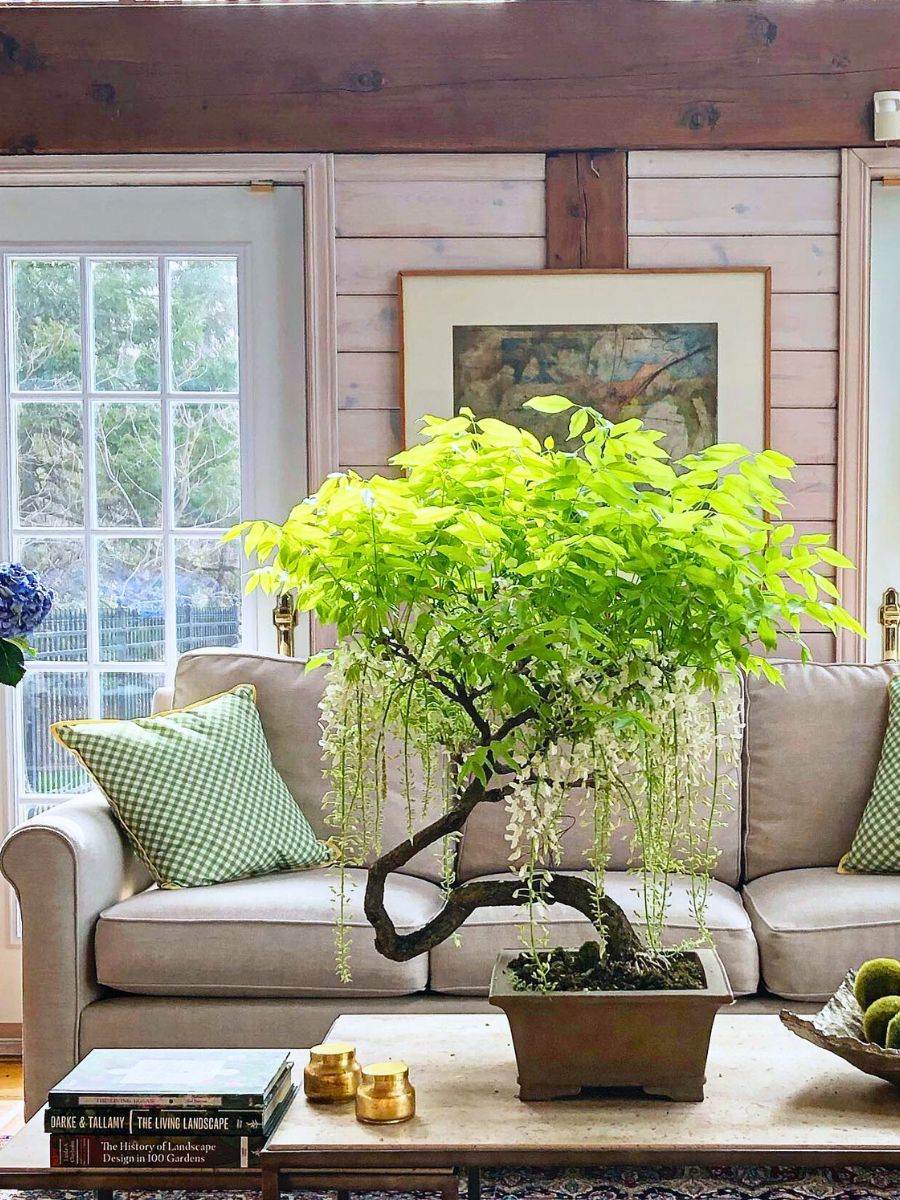
Photo by @countryhomeandblooms
Think of a dwarf bonsai with its colorful leaves resting atop a sleek, modern credenza. Or a diminutive citrus tree with fragrant blooms and jewel-toned fruits nestled in the corner of your home office. This is the kind of visual interest and tactile experience of these miniature marvels that can truly transform the indoor landscape.
In addition to that, with their small statures, these miniature plants, also, excel at inhabiting even the most compact of spaces. Perched on a side table, windowsill, or bookshelf, they still bring out a sense of life into the interior space, where they also have the benefit of enhancing humidity in the environment and hence reducing occurrences of conditions such as dry and chapped skin, sore throats, and even coughs.
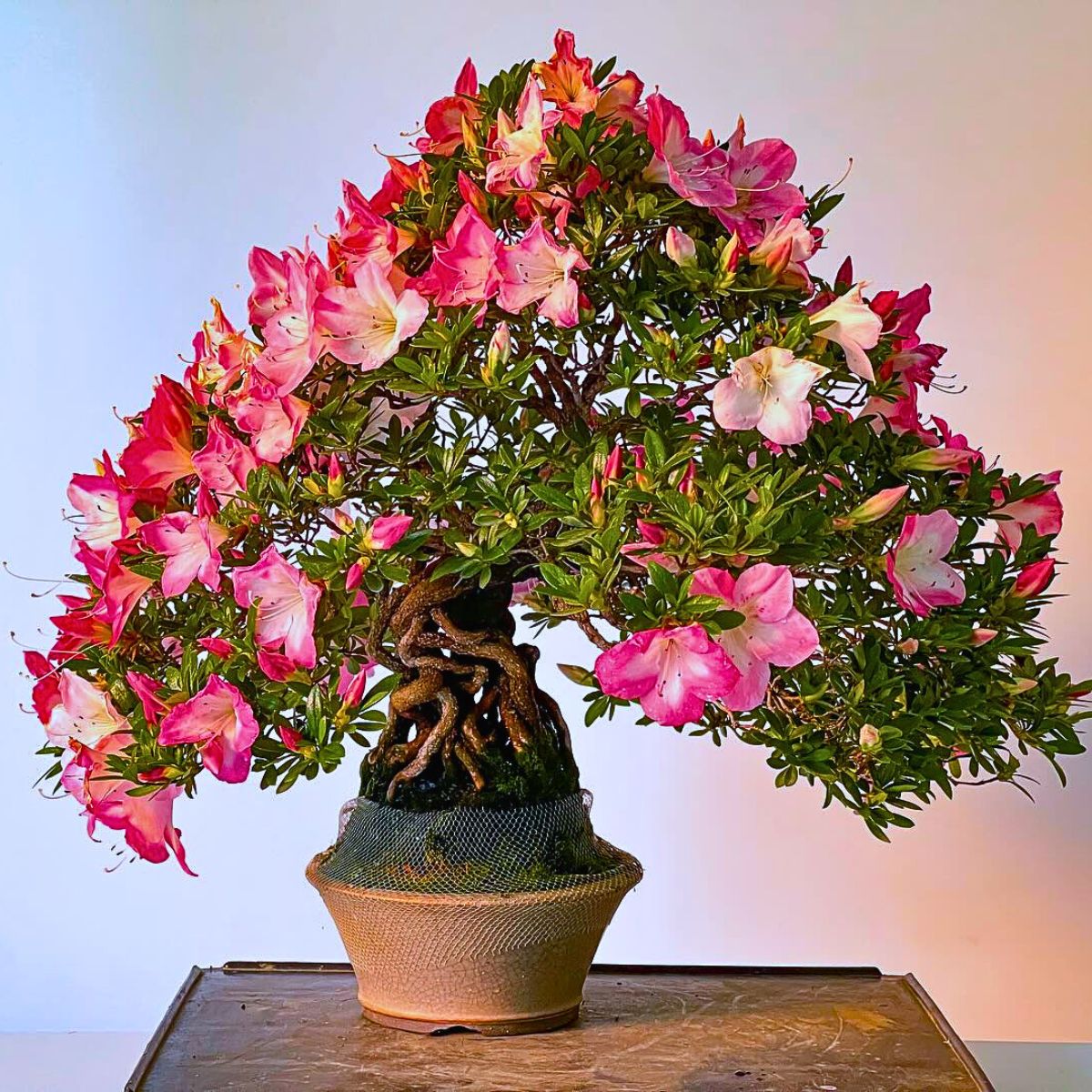
Photo by @pedro_gredos
On a spiritual and personal growth level, bonsais are believed to enhance patience, given the long durations it takes to nurture them. They also spark one’s creativity, create a greater sense of self-awareness; more like what meditation and yoga would do to someone, and create a sense of compassion.
Likewise, Brighten the Outdoor Space and Garden With Colorful Miniature Bonsais
In most cases, when we think of bonsai, the first images that come to mind are often intricate, miniature trees housed in quaint indoor settings. However, these plant specimens can also thrive outdoors, where they, equally, add pops of color and living art to any garden or patio. They are, essentially, a perfect way to incorporate a touch of the exotic into outdoor spaces as well.
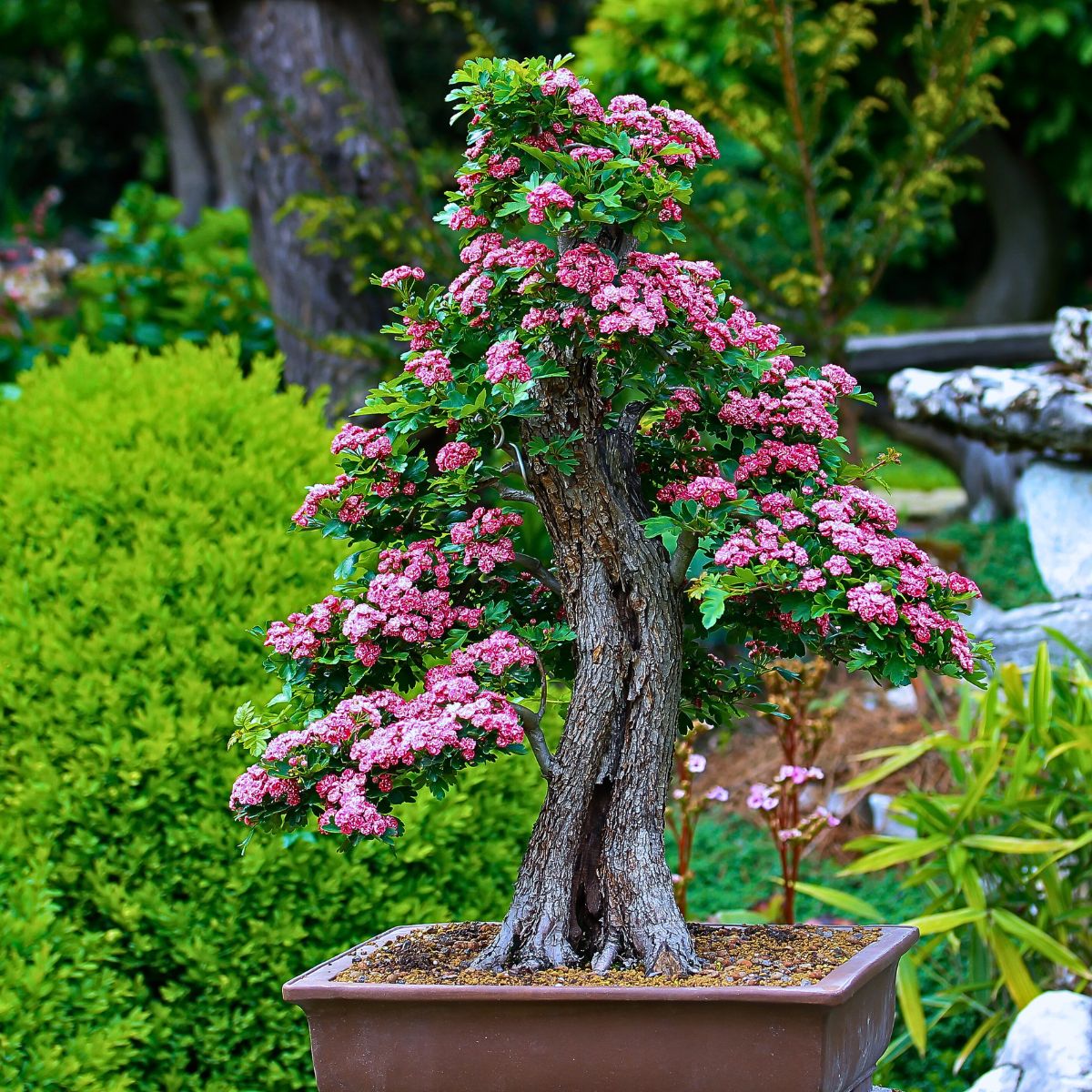
Photo by IlonaBurschl
A careful selection of cultivars with brilliant foliage, flowers, or fruits, can create a unique focal point that demands attention. Imagine a dwarf Japanese maple with its fiery red leaves cascading over the edge of a weathered ceramic pot. Or a diminutive citrus tree bearing fragrant blooms and tiny, jewel-toned fruits. The visual interest and tactile experience of these miniature marvels can elevate an outdoor space.
Apart from their sheer aesthetic appeal, miniature bonsai trees also offer practical benefits for the garden. Their small stature means they take up minimal room. They are, thus, ideal for compact patios, decks, or balconies where larger plants may overwhelm the available space. And since they are typically grown in containers, they can be easily moved around to suit the changing design needs or provide color in different areas of the yard.
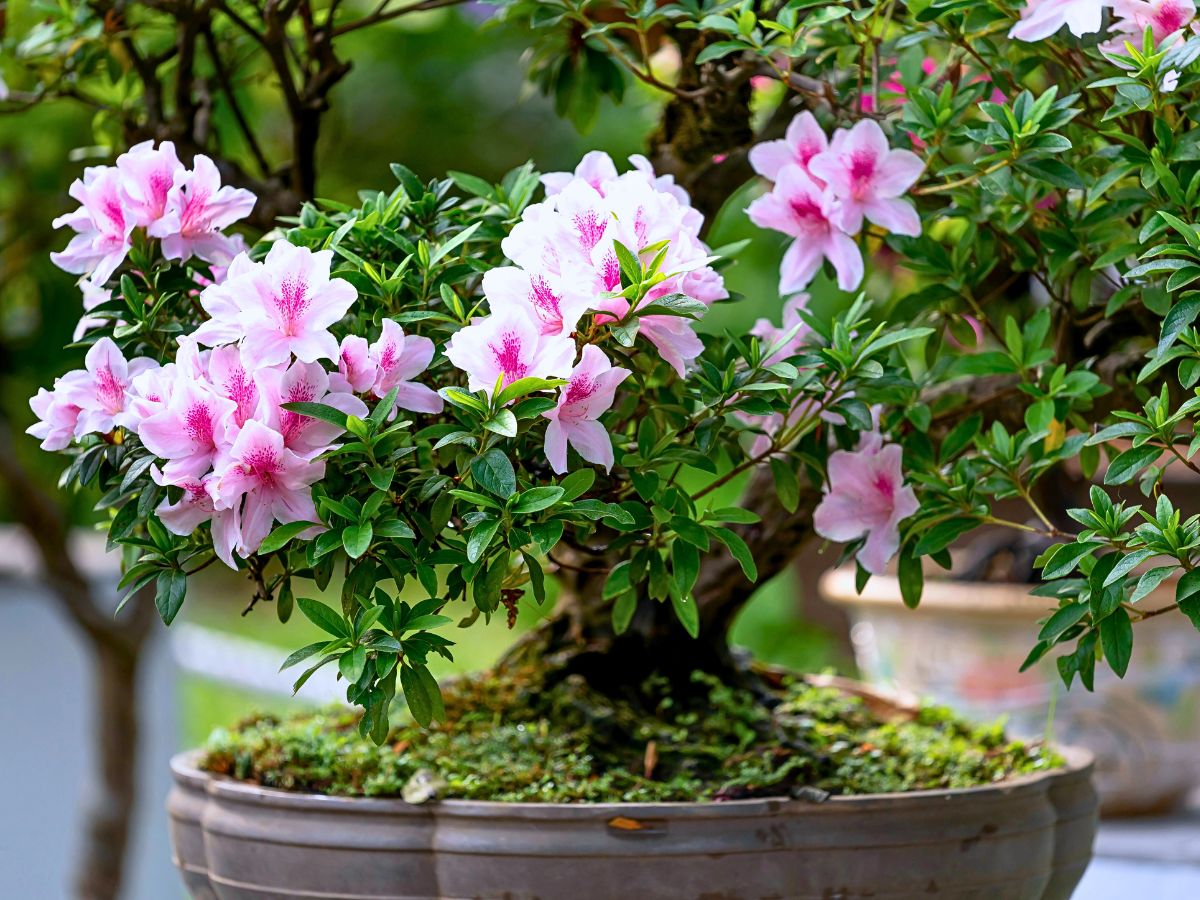
Growing Bonsai Trees That Thrive
Bonsai trees are a demanding plant to nurture and not all varieties perform optimally in just any setting. Bonsai experts note that these trees, in fact, love the outdoors where they get full exposure to all the growth requirements for plants. Even so, these plants can also be grown indoors, even though this would require a little bit more tending than one would for a bonsai planted outdoors. Nonetheless, here are seven flowering bonsai plants that one can successfully grow to enhance their spaces.
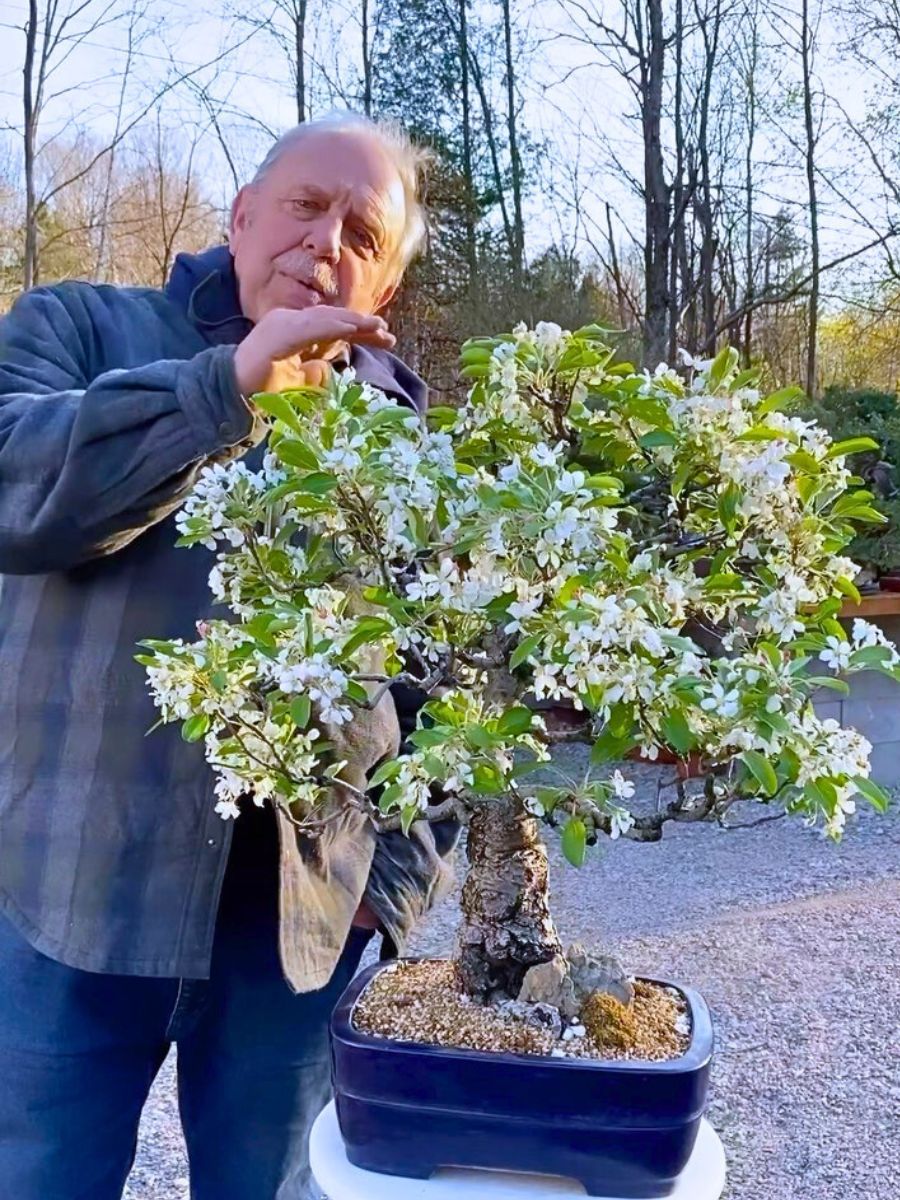
1. Beautiful Bougainvillea Bonsai
Coming in the form of an evergreen shrub, thorny vine, or little tree, Bougainvillea is a beautiful plant that can be nurtured as a bonsai. It produces vibrant pink, orange, white, magenta, or red gossamer-thin petal-shaped leaves that take the form of flowers. It also produces tiny yellow flowers at the center of the clusters of petal-shaped leaves. Bougainvillea’s wide variety of colors is a result of cross-breeding, making them an appealing miniature tree to have around in the form of a bonsai.
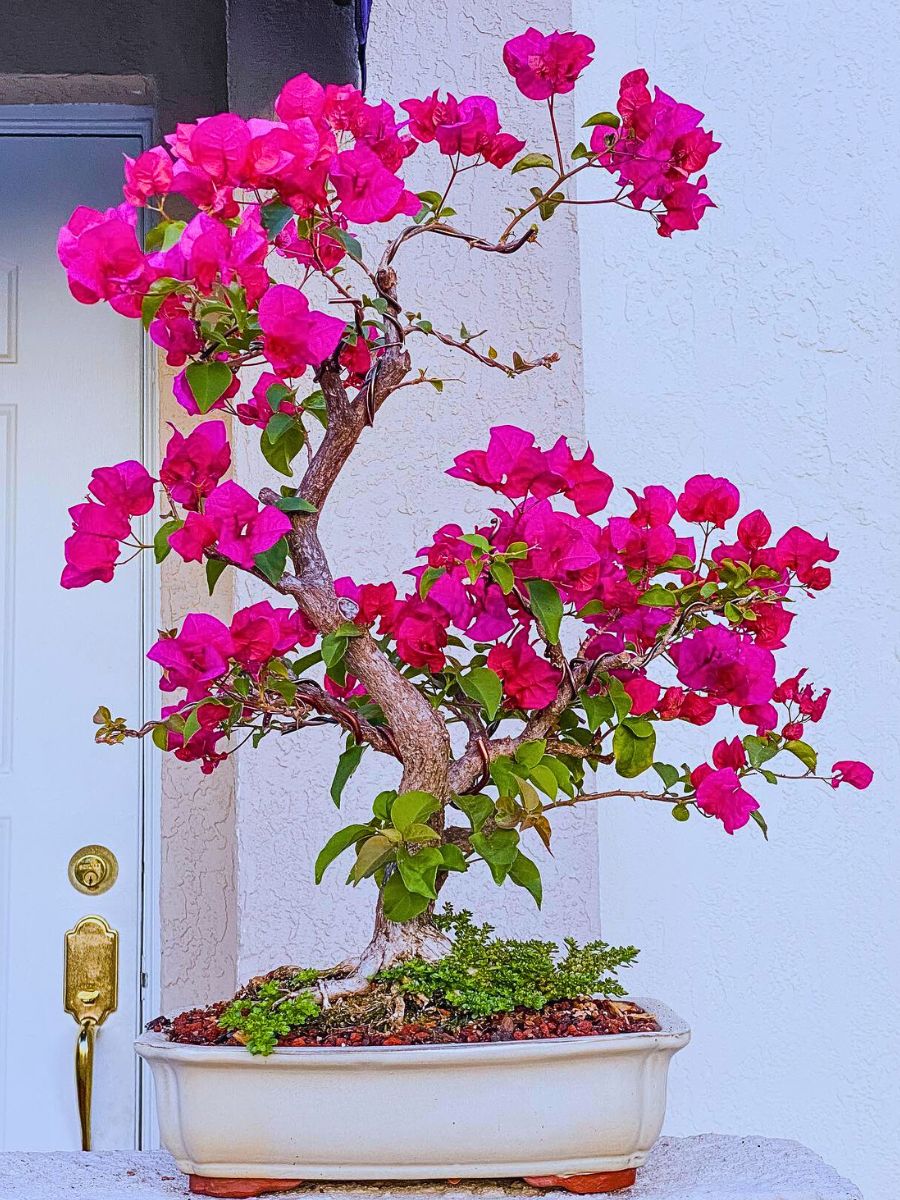
Photo by @grove_bonsai
2. The Unique Magnolia Stellata Bonsai
Also known as Star Magnolia, the Magnolia stellata is perhaps the best magnolia to be grown as a bonsai. It is a slow-grower that takes years to form a thick enough trunk of a true bonsai. When it blossoms, Star Magnolia produces large blooms that are white or pink, with a subtle citrusy scent. Who wouldn't want such a combination of qualities in their indoor or outdoor spaces?
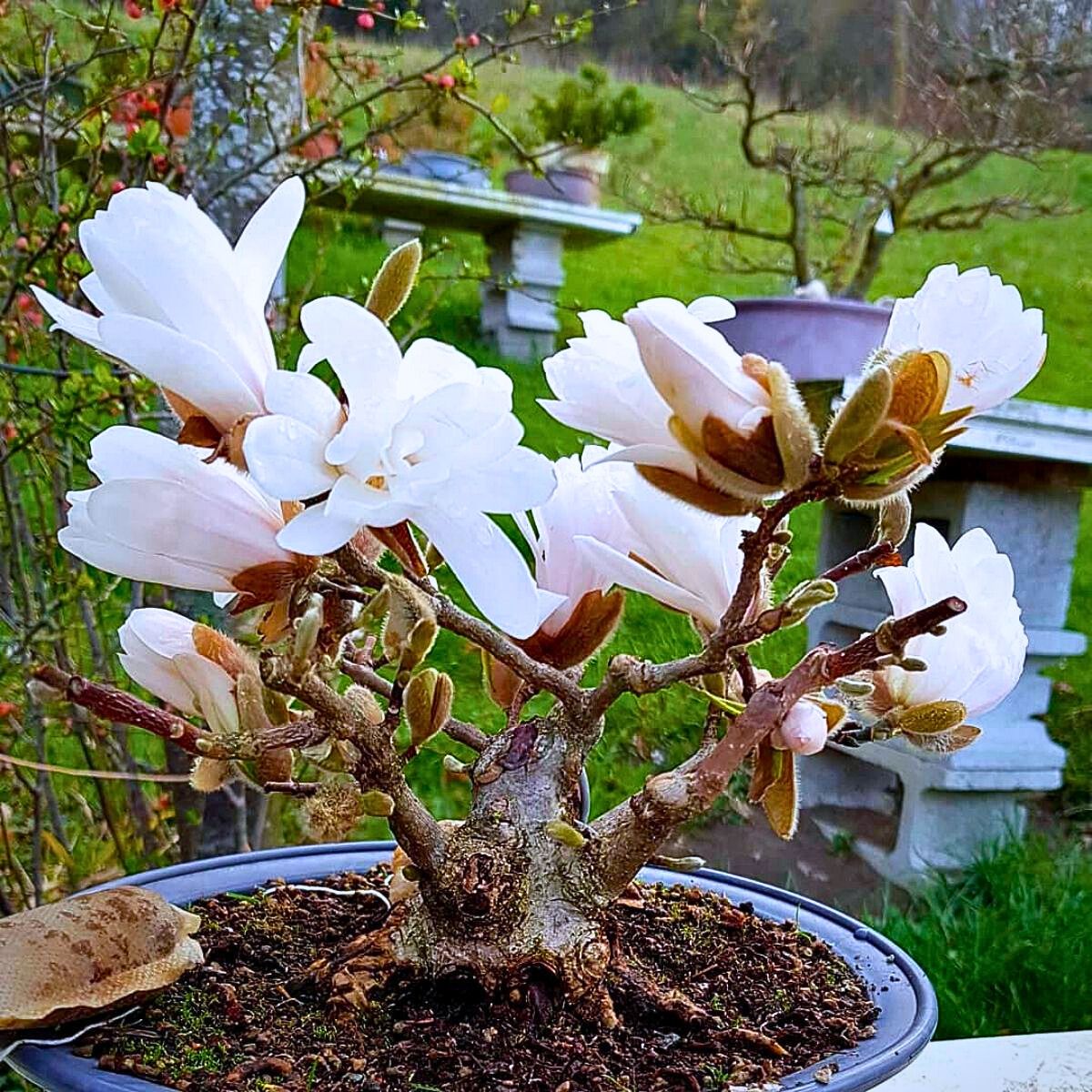
3. The Colorful Azalea Bonsai
Azaleas are widely known for their eye-catching flowers that come in many colors and different shapes and sizes. When nurtured as bonsais, azaleas are therefore expected to bring out in all their glory, all the colorful qualities that they possess. After all, they are touted to add color to the art of bonsai! From pink, to white and red, azalea blooms would be quite an enchanting sight to behold in any setting, especially when they are planted as miniature trees indoors. While they mostly prefer the outdoors, these bonsais can also be grown indoors. Of course with lots of care and tending.
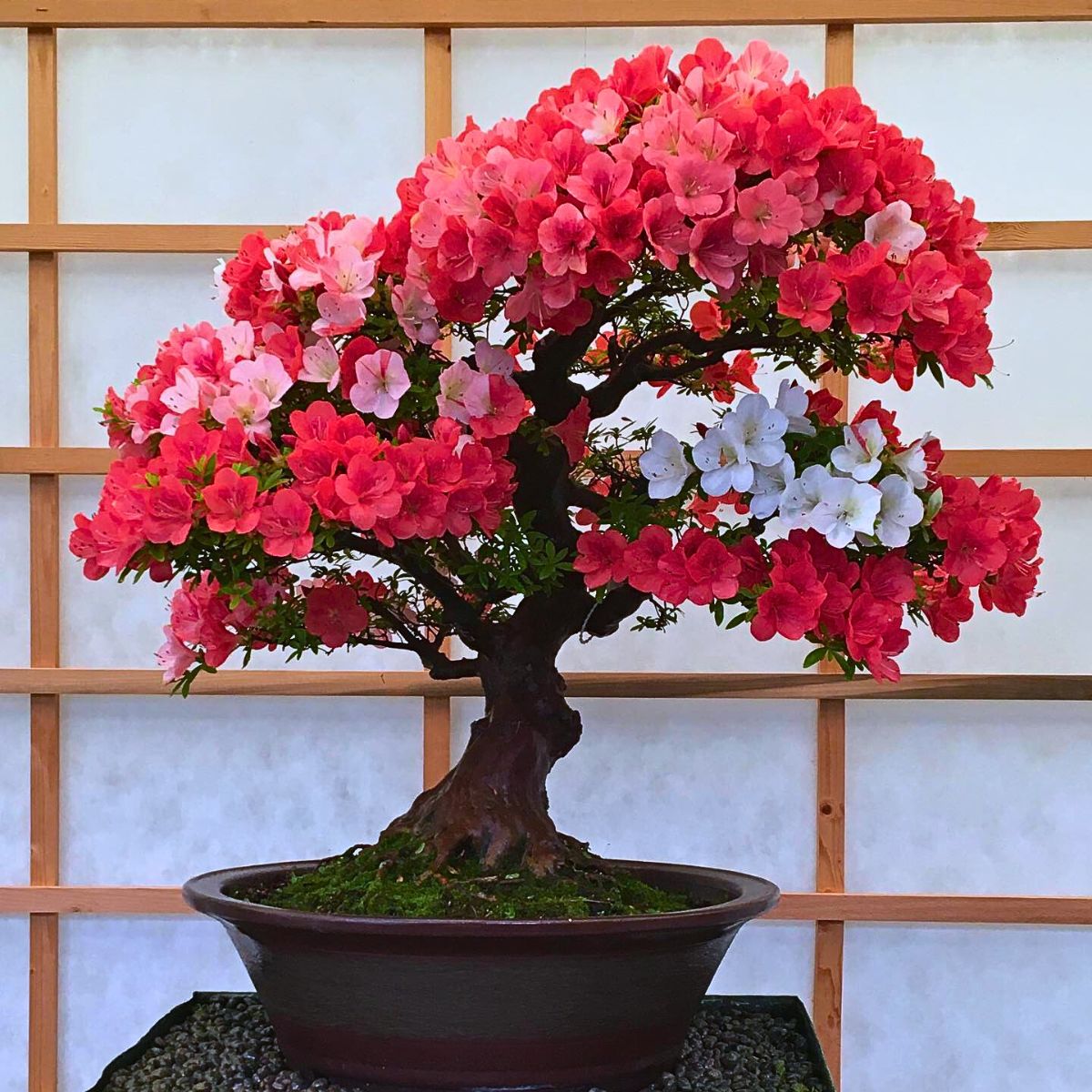
Photo by @francescosantinibonsai
4. The Fruity Cotoneaster Bonsai
Picture a bonsai tree that ornaments the indoors and at the same time gives you berries, and the Cotoneaster is what you get. The Cotoneaster is an ideal pick for nurturing as attractive bonsai trees, particularly in small sizes. Most species of this plant have small dark green glossy leaves and bloom tiny white flowers in spring, then red, orange, or yellow, apple-shaped berry-like fruits. Its easy-care properties also make it an ideal choice for many bonsai enthusiasts. Plus, its uniqueness makes it one you'd want to invest in.
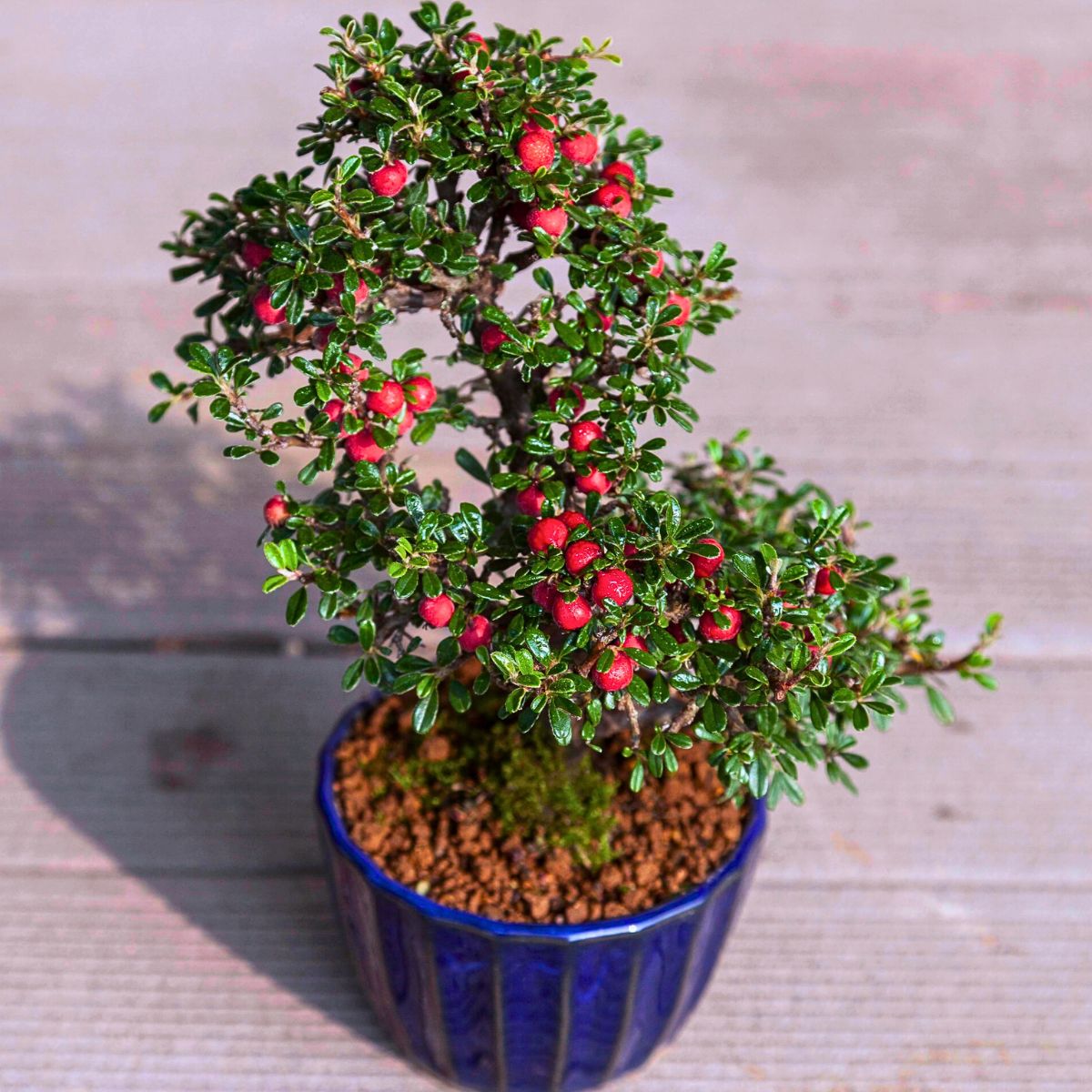
Photo by @crespibonsai
5. The Ever-Changing Crepe Myrtle Bonsai
Crepe Myrtle is an exciting tree largely because of its versatile nature and ability to transform its appearance. For instance, the colors of the trunk change as the tree sheds its bark from season to season and becomes even more beautiful as the tree ages. Its flowers also change from reds to oranges and yellows, according to the prevailing season. Another exciting quality of the Crepe Myrtle bonsai is its beautiful foliage that changes its color in fall. The tree comes in several varieties and different bloom colors.
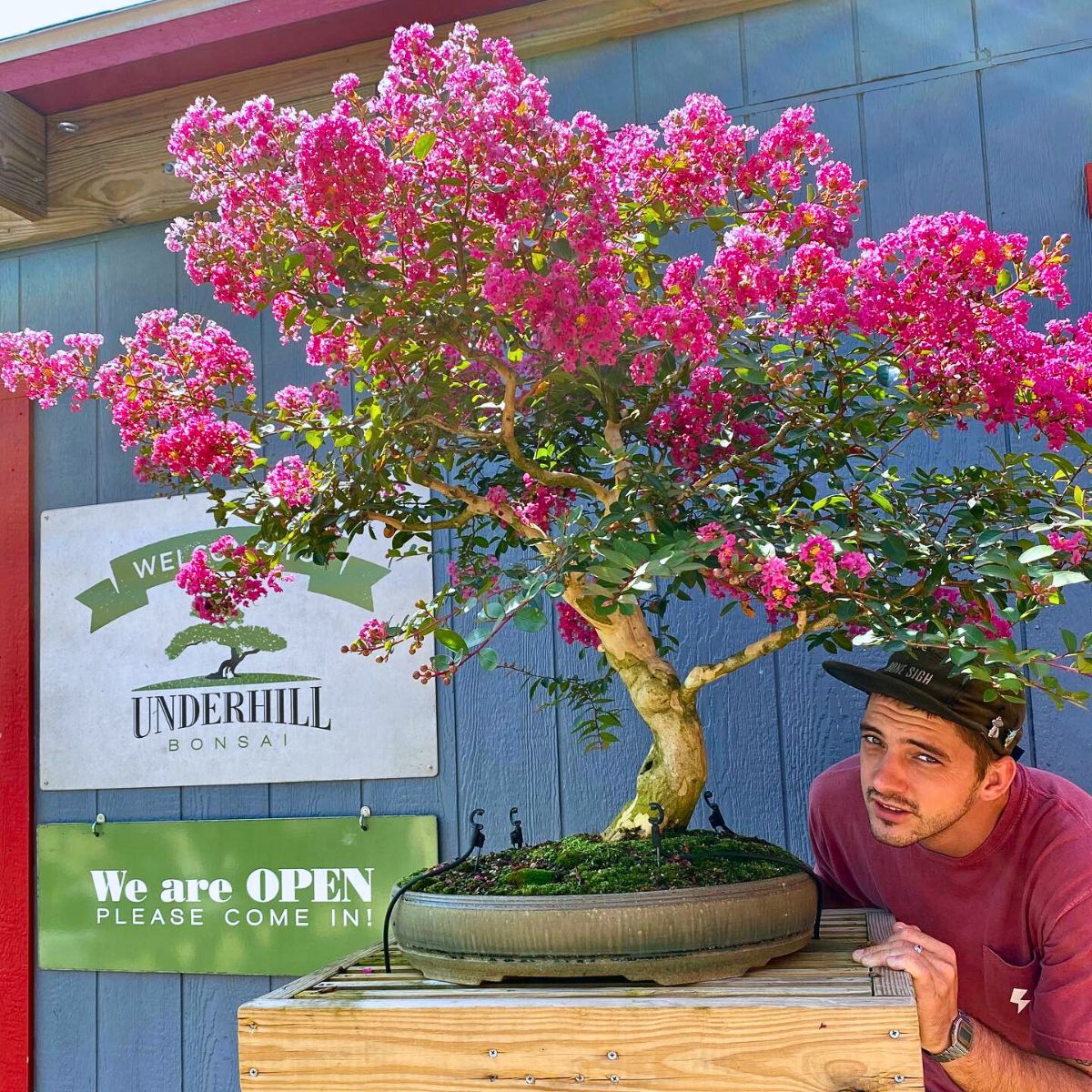
Photo by @underhillbonsai
6. The Autumn-Colored Japanese Maple Bonsai
Acer palmatum is the other name for this beautiful tree that is originally from Japan, China, and Korea and comes in at least five varieties for bonsai-making. These trees are often considered among the most beautiful to look at. Their foliage attains brilliant colors of yellow, orange, burgundy, or red, especially during fall. In spring, the new leaves are often colored yellow or orange. And the tree produces reddish flowers that come in clusters. As a young tree, its bark is usually reddish or green and turns grey as the tree ages. So much color in a single tree!
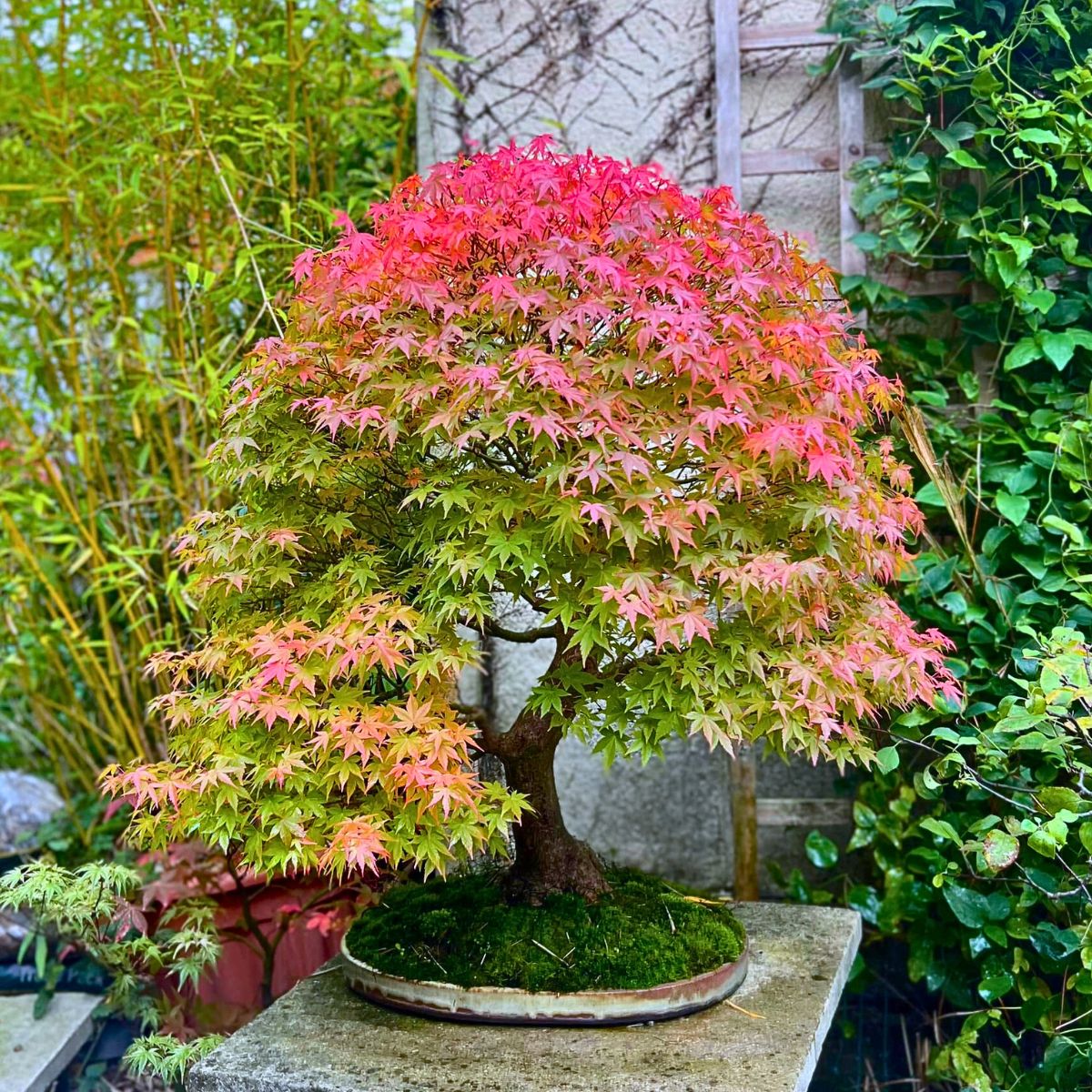
Photo by @harry.harrington
7. The Showy Wisteria Bonsai
With its blue, lavender, purple, or white colors depending on the species, Wisteria bonsai trees are among the most enchanting sights that one can have inside their home, office space, or lounge. It grows quite fast compared to numerous others and after fully blooming, the tree’s trunk and branches are hidden under the purples or blues of the blossoms, as well as the leaves and dangling flower-covered tendrils. It also produces a fragrance from its flowers, that refreshes the indoors.
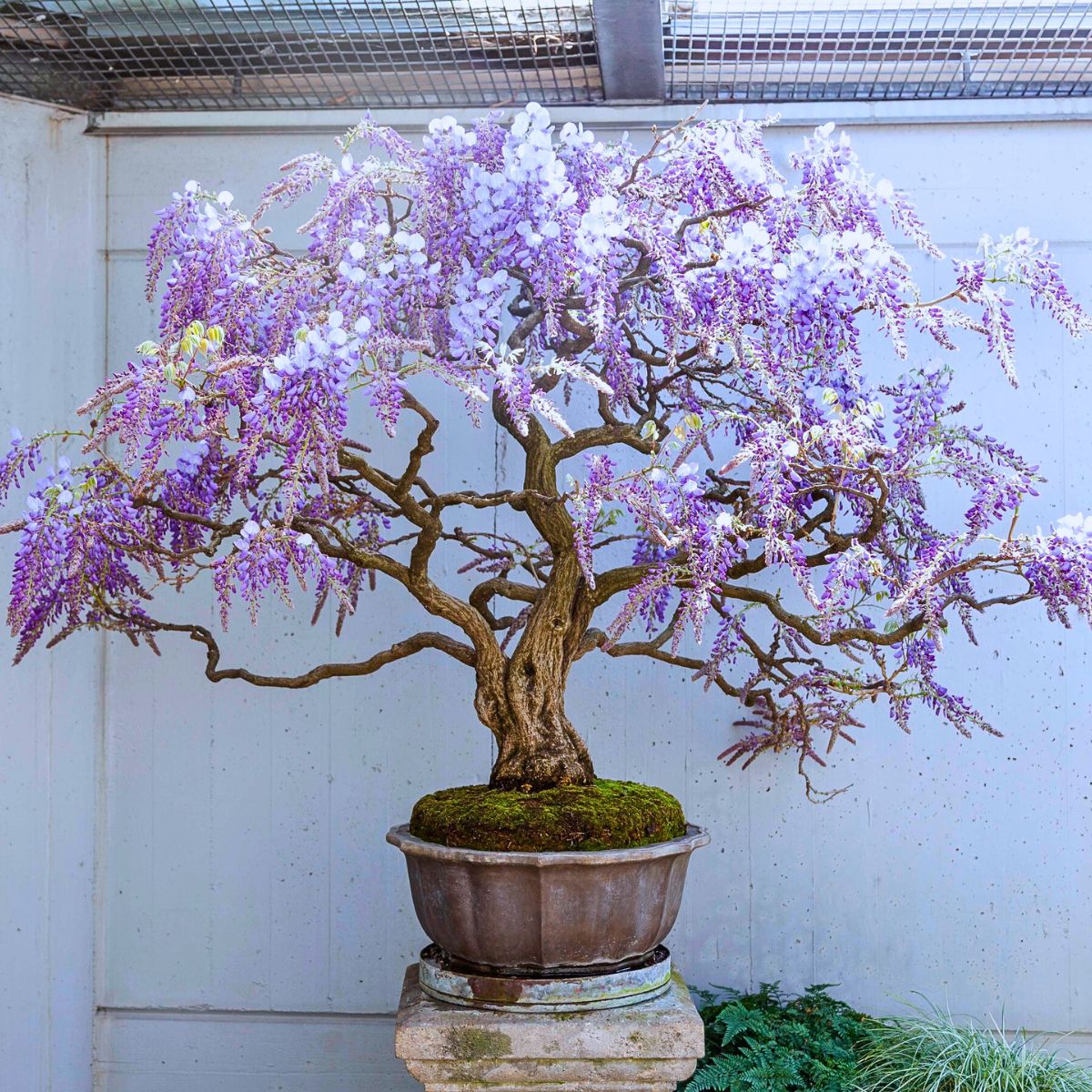
Photo by @crespibonsai
It is worth noting that bonsai trees grown indoors require special care and provision of numerous requirements than an ordinary bonsai would need when grown outdoors. Also, many of these miniature trees thrive well and show their true colors in fall just when wintry conditions approach. Nevertheless, you can still try any of these bonsais and experience what they offer!
Feature image by @harry.harrington, header image by IlonaBurschl.

